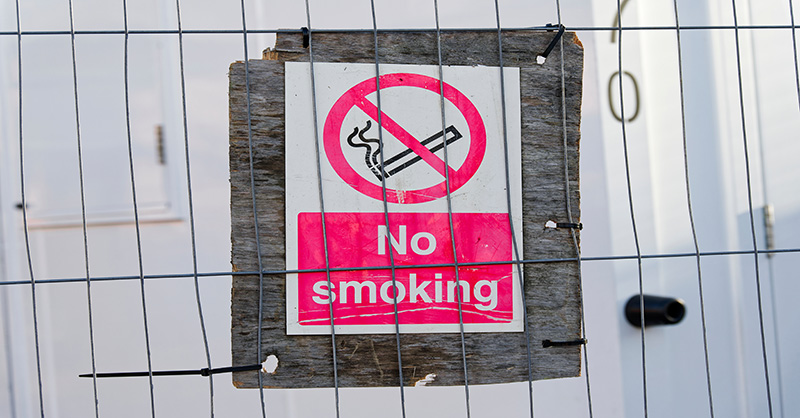Managing Smoking on Construction Sites: Smoke-Free Policies and Safe Practices

Smoking on construction sites poses significant health and safety risks for workers and productivity challenges for employers. The best approach is to prohibit any smoking or tobacco use on your construction sites. However, given that 23% of construction workers smoke, if smoking is allowed on the job, implementing effective smoking controls is important to help ensure a safe and efficient jobsite work environment.
Five Strategies to Help Manage Smoking on Construction Sites
By implementing effective smoking controls, construction sites can reduce health risks, prevent accidents, and improve overall productivity. Creating a safe and healthy work environment can benefit both the workers and the project as a whole.
Below are five strategies to help manage smoking on construction sites effectively:
1. Designate Smoking Areas
If smoking will be accepted on the jobsite at all, establishing designated smoking areas is a practical approach to control smoking on construction sites.
These areas should meet the following requirements:
- Clearly marked and located away from flammable materials and high-traffic zones
- Equipped with adequate smoking receptacles to safely dispose of cigarette butts and other smoking-related waste
- These receptacles should be constructed of non-combustible materials.
2. Establish Strict No-Smoking Zones
Implementing strict no-smoking zones, especially in areas with high fire risks or where flammable materials are stored, is crucial. Uncontrolled smoking on jobsites creates fire hazards. No-smoking signs should be posted frequently in a language all workers can understand.
These zones should meet the following requirements:
- Clearly marked to help ensure all workers are aware of the restrictions
- Regularly monitored to help ensure compliance
- Enforced with immediate action against violations to help maintain a safe work environment
3. Implement Smoking Policies and Education
Developing and enforcing a comprehensive smoking policy can help manage smoking on construction sites.
This policy should include the following:
- Clear guidelines on where and when smoking is permitted
- Consequences for violating the smoking policy
- Educational programs to inform workers about the health risks associated with smoking and the benefits of quitting
4. Provide Support for Smoking Cessation
Providing support for workers who wish to quit smoking can be beneficial.
This support can include the following:
- Access to smoking cessation programs and resources
- Counseling services to help workers manage stress and cope with the challenges of quitting
- Incentives for workers who successfully quit smoking
5. Promote a Smoke-Free Culture
Encouraging a smoke-free culture on construction sites can lead to long-term benefits. This can be achieved by doing the following:
- Promoting health and wellness programs that emphasize the importance of a smoke-free lifestyle
- Resources are available through the American Lung Association and the U.S. Department of Health and Human Services.
- Recognizing and rewarding workers who adhere to the smoking policies and contribute to a safer work environment









